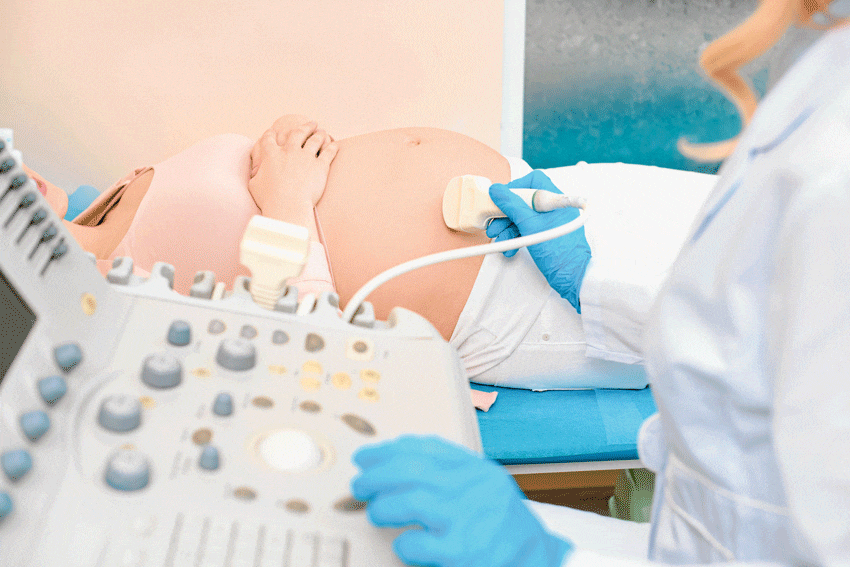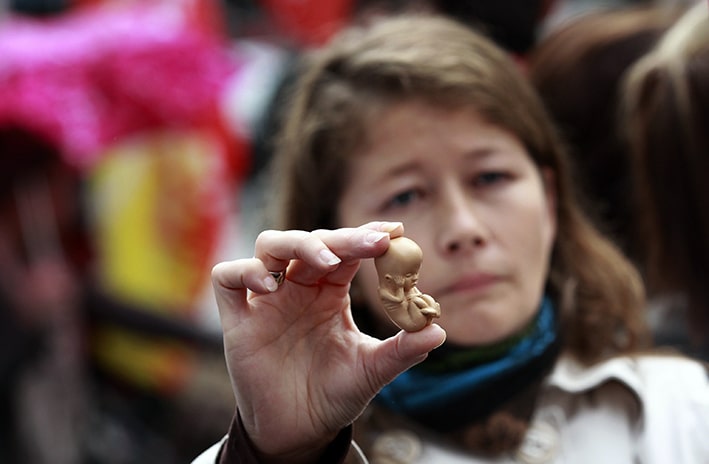
A Queensland report on late term abortions can only send chills down the spine of any humane individual
I have never put a “trigger warning” on any of my columns before, but I want to warn you that this one is quite distressing.
Two recent reports about abortion in Queensland have received only minimal public or media attention, despite their alarming contents.
In late July, the University of Queensland published a study aimed at identifying the barriers to abortion that remain in Queensland, three years after it was fully decriminalised.
The study began by stating that there are somewhere between 10,000 and 14,000 abortions in Queensland each year (which equates to between 27 and 38 abortions each day, more than one every hour).
The research was conducted by surveying the reasons 2000 women accessed information and support from Children by Choice and based on those surveys, concluded that there are still barriers to abortion access in Queensland. It recommended a greater investment in developing an abortion workforce.
“The youngest person to seek assistance was just 12 years old, and at least one was 40 weeks’ pregnant when they sought help.”
It’s hardly a surprising result from a study conducted in partnership with an abortion advocacy group would find that more than 10,000 abortions each year is still not enough.
What was shocking, though, were the reasons people sought information from Children by Choice.
859 women reached out to Children by Choice because of “exposure to intimate partner violence, family violence, reproductive coercion and other violence.”
The youngest person to seek assistance was just 12 years old, and at least one was 40 weeks’ pregnant when they sought help.
602 women were concession or healthcare card holders (indicating some reliance on social welfare), 153 women were Aboriginal or Torres Strait Islander, 138 were students, 110 had no income, 104 were homeless, 30 had a disability and 15 were asylum seekers or refugees.

Children by Choice – described in the study as an “all options pregnancy counselling service” provides information about parenting and adoption, but only provides financial assistance for abortion. The results are just staggering, so too is the researcher’s conclusion.
Disturbingly, the media release from the University of Queensland was titled “Obstacles hinder access to legal abortion in Queensland.”
How about “Almost half of the women seeking abortions in Queensland do so because of violence?” as a description of the greater problem. Then this past week, another report about abortion in Queensland was released.
This focused on the frequency of late-term abortions in Queensland, something which the researchers described as feticide. “Feticide,” they wrote, “is a procedure that ensures that the fetus is dead prior to birth,” typically by injecting potassium chloride into the heart to make it stop.
The researchers found that late-term abortions almost tripled between 2010 and 2020; there were 20 late-term abortions in 2010, 58 in 2019 and 54 in 2020.
“Far from raising alarm over the casual mentioning of the killing of babies born alive … the only media coverage of this report was titled: ‘Rising number of late term abortions ‘vital’ to healthcare.’”
Prior to the decriminalisation of abortion until birth in 2018, the number of late-term abortions in any year did not exceed 40. As soon as the law changed, the numbers are now more than one each week.
With abortion until birth now legal across the country, it is not hard to imagine that these numbers are repeated in all the other states and territories. Most likely, there is a late-term abortion in Australia every day.
This makes some of the other comments contained in the report even more alarming.
“There are no specific Australian guidelines regarding late terminations,” the researchers note. This absence of guidelines has yielded some wicked results.
“We did not include cases of selective reduction in multiple pregnancies,” they said, which means that the numbers of late-term abortions reported did not include those who opt for a late-term abortion of one or more of their twins or triplets.

The numbers also did not include “very rare cases of late termination without prior feticide,” which is a euphemism for the killing of a baby after it is born alive. This statistic is not reported.
Far from raising alarm over the casual mentioning of the killing of babies born alive (a practice that many deny continues to occur as a reason for opposing ‘born alive’ legislation), the only media coverage of this report was titled: “Rising number of late term abortions ‘vital’ to healthcare.”
This isn’t about healthcare or about the rights of women.
The killing of innocent children, many of them viable and some of whom had a very short life outside the womb, is a scourge on this country.
That “greater access to abortion” is the recommendation of researchers who found that almost half of those seeking support or advice about abortion were victims of violence is a scourge on this country and all who claim to be advocating for women.
Related Articles:
